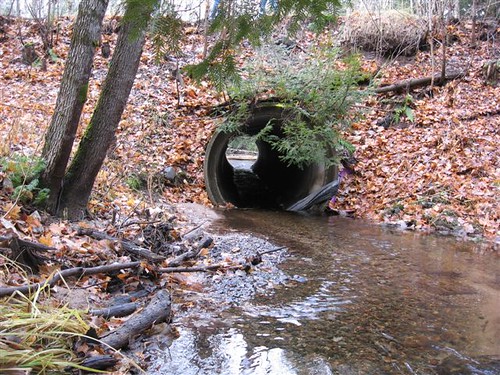“The streams of a watershed are like the body’s circulatory system,” says Todd Warner, Natural Resources Director of the Keweenaw Bay Indian Community (KBIC), in the northwest Upper Peninsula of Michigan, along the Keweenaw Bay of Lake Superior.
KBIC and USDA’s Natural Resources Conservation Service (NRCS) are partnering on a project to improve the health of that circulatory system on KBIC tribal lands and surrounding areas as part of the Great Lakes Restoration Initiative.

The Great Lakes Restoration Initiative was created by the Obama Administration in 2010 to combat invasive species, protect watersheds and shorelines from non-point source pollution, clean up toxins, restore wetlands and other habitat areas, and work with partners on outreach in the eight-state area of the Great Lakes Basin. The initiative is implemented by a task force of 11 federal agencies, including NRCS.
Increasing the passage of fish between bodies of water is part of the tribe’s ongoing effort to improve fish and wildlife habitat on the reservation. Recently, the KBIC tribe completed a road culvert survey and found that some existing culverts did not allow fish passage when water levels were low, or when high water flow was too fast for fish to manage, says Jim Sweeting, NRCS District Conservationist for Baraga County.
Work to replace 12 road culverts to provide for better fish passage is beginning this spring with NRCS financial and technical assistance. Over half of the funding, about $400,000, will be provided through the Great Lakes Restoration Initiative.
The fish passages will be installed on cold water streams that provide habitat for brook trout and other species. Improved fish passages will give trout access to a larger area of the stream system to find food and spawn.
“The entire stream circulatory system will benefit,” Warner says.
Many partners are involved in making this project successful, including the Baraga County Road Commission and the U.S. Army Corps of Engineers.
When all of the fish passages are installed, the health of all of the waters running through tribal and surrounding lands will be improved. Healthier waters mean better habitat for trout and other species, as well as increased recreation for tribal members and other residents and visitors to the western Upper Peninsula.
Find out more information about the Great Lakes Restoration Initiative.
Check out more conservation stories on the USDA blog.
Follow NRCS on Twitter.
